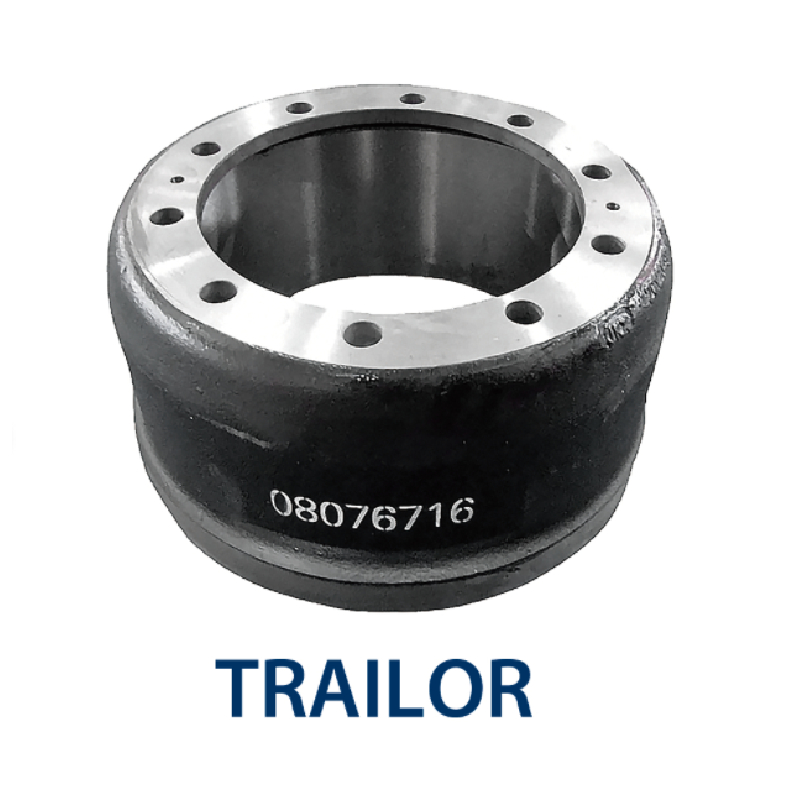Oct . 11, 2024 13:50 Back to list
Overview of Brake Drum Component Diagram and Their Functions
Understanding Brake Drum Parts A Comprehensive Guide
Brake systems are a critical component of vehicle safety, and among the various types of braking mechanisms, drum brakes are one of the most commonly used. Understanding the individual parts of brake drums is essential for both vehicle mechanics and owners. This knowledge not only aids in maintenance and repair but also enhances overall vehicle performance and safety. In this article, we will explore the essential parts of a brake drum system, their functions, and the importance of each component.
The Components of a Brake Drum
1. Brake Drum The primary component of a drum brake system, the brake drum is typically made from cast iron or aluminum. It is a cylindrical device that rotates with the wheel. When the brakes are applied, the drum rotates while the braking shoes contact its inner surface, creating friction that slows down the vehicle.
2. Brake Shoes These are curved components that press against the inside of the brake drum. When the brake pedal is pressed, hydraulic pressure causes the brake shoes to expand outward, making contact with the drum. The friction between the shoes and the drum is what slows or stops the vehicle. Brake shoes are usually lined with a friction material to enhance their effectiveness.
3. Wheel Cylinder Located between the two brake shoes, the wheel cylinder is a critical part of the hydraulic brake system. It contains pistons that push the brake shoes outward against the drum when the braking system is activated. The wheel cylinder is filled with brake fluid, which translates the hydraulic pressure from the master cylinder when the brake pedal is pressed.
4. Return Spring After the brake is released, the return springs help pull the brake shoes back into their original position, away from the drum. This prevents the shoes from dragging against the drum, which could cause unnecessary wear and overheating. Return springs are essential for ensuring that the brake system resets and is ready to apply the brakes again.
5. Adjuster Mechanism Many drum brake systems include an adjuster mechanism that keeps the brake shoes properly spaced from the drum. These adjusters automatically compensate for wear over time, ensuring optimal performance. Some systems feature manual adjusting screws while others use automatic adjusters that work based on the movement of the brake shoes.
brake drum parts diagram

6. Backing Plate The backing plate is a flat sheet that supports the entire brake assembly. It houses the wheel cylinder and provides a mounting surface for the brake shoes and other components. The backing plate also serves as a barrier to prevent dirt and debris from entering the brake assembly, which can affect performance.
7. Friction Material The lining on the brake shoes consists of friction material that provides the necessary grip against the drum. Over time, this material wears down and needs to be replaced to ensure effective braking. The type of friction material used can affect the overall performance of the brakes, including stopping power and noise levels.
8. Drum Brake Hardware Kit This kit includes essential small parts like springs, clips, and other fasteners that are necessary for the proper function of the drum brake system. Each hardware component plays a role in ensuring everything stays in place and operates smoothly.
Importance of Regular Maintenance
Regular inspection and maintenance of brake drum components are essential for safe vehicle operation. Over time, wear can compromise the effectiveness of the braking system, leading to potentially dangerous situations. Mechanics often recommend checking the condition of brake shoes, drums, and related components during routine vehicle maintenance.
By understanding the parts of the brake drum system, vehicle owners can make informed decisions about servicing and repairs. Whether you are a DIY enthusiast or relying on professional services, knowledge of these components will enhance your ability to maintain a safe vehicle.
Conclusion
The brake drum parts diagram serves not only as a blueprint for mechanics but also as an educational resource for individuals looking to understand their vehicles better. Recognizing how each part contributes to the overall function of brake systems helps facilitate better maintenance and repairs. A well-maintained braking system is vital for safety, efficiency, and the longevity of the vehicle, making this knowledge indispensable for all vehicle owners.
-
HINO Industrial Solutions - ¡Ң���ຽ��е��������˾ | Advanced Efficiency&Customization
NewsJul.13,2025
-
HINO Industrial Efficiency Solutions - ¡Ң���ຽ��е��������˾
NewsJul.13,2025
-
HINO Industrial Solutions - ¡Ң���ຽ��е��������˾ | Advanced Technology&Reliability
NewsJul.13,2025
-
HINO Industrial Efficiency-Jiangsu Hino Industrial|Productivity Optimization&Cost Reduction
NewsJul.12,2025
-
HINO-¡Ң���ຽ��е��������˾|Advanced Industrial Solutions&Energy Efficiency
NewsJul.12,2025
-
Premium Brake Drum Iveco – Durable Drum Brake Drum & Brake Shoe Solutions
NewsJul.08,2025
